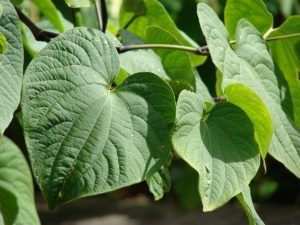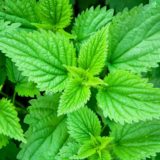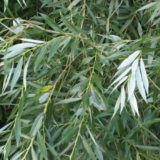Table of Contents
Natural Alternatives to Tobacco That Provide Nicotine or Nicotine Like Effects

Natural Legal Stimulants Like Tobacco (With or Without Nicotine)
Nicotine is an amazing, stimulating alkaloid that is found in the tobacco plant, and many species of the nightshade family. It has been a cultural sensation for decades (even still reinventing its presence in the form of being vaped rather than smoked). Many people LIVE for their cigarettes; However, today, most people understand how damaging and carcinogenic cigarettes actually are to the body and one’s health. This widespread understanding of the health concerns surrounding smoking tobacco leave smokers looking for natural herbs that provide stimulating effects without the negative side effects.
Whether one is trying to quit tobacco and deal with withdrawals, or trade it for something else entirely, there are plenty of other natural alternatives that can provide that same stimulating buzz.
List of Natural Substitutes For Tobacco
It is important to understand that not all sources of nicotine must reach combustion in order to provide stimulating effects. Many of these alternatives are not smoked at all. Here are all of the other sources of Nicotine, and plants with stimulating effects, which are not the Tobacco plant.
Damiana (Turnera diffusa)
Method of Intake: Smoked
Damiana is often used as one of the most popular substitutes for tobacco. It is natural and stimulating in effects. Like tobacco, it is psychoactive, which is why it is effective. Some people mix Damiana with other herbs in what are called smoking blends. The most common natural smoking blends include mixing marijuana with Damiana, as well as mixing tobacco with Damiana. Edge77 sells a higher quality Damiana herbage used for smoking.
Acacia retinodes Schlechtend. (aka Swamp Wattle)
Method of Intake: Smoked, Consumed
This plant contains nicotine in fairly large quantities. It does not have much historical use, traditionally speaking, but it is well known for its nicotine content.
Brunfelsia spp.
Method of Intake: Consumed
The root of the manaca plant can be consumed to create stimulant-effects that are very similar to those provided by tobacco. This is more effective for people who are non-smokers, as it is much weaker than regular tobacco. It may take smokers a bit of weening off tobacco to be able to experience the same effects from this plant. Nonetheless, eating root is safer for the body than smoking leaves.
Camellia sinensis (Linnaeus)
Method of Intake: Brewed to Tea, Consumed
This tea is contains so much caffeine that it is very frequently used for its stimulating effects. What makes it such a good substitute for tobacco is the nicotinic acid.
Cannabis
Method of Intake: Smoked; Consumed
Cannabis is often regarded more as a sedative-like drug than a stimulant. However, when Cannabis is combined with any plant that provides nicotine, even tobacco, it massively amplies the effects of the nicotine. It is possible to use Cannabis alongside other substitutes, to make a stronger-than-tobacco alternative of a nicotine source.
Lavender Leaves
Method of Intake: Smoked
Although choosing another herb to smoke is not the best idea to quit Tobacco, some are easier on the lungs than others Lavender smells great, tastes great and provides an interesting alternative to tobacco. Plus, one is required to roll their own cigarettes, adding “ritual” to the habit.
Cestrum nocturnum Linnaeus
Method of Intake: Smoked; Brewed to Tea, Consumed
A powerful nicotine producer and a member of the nightshade family. Not much is known about its traditional ritual use, but it is definitely capable of strong stimulating effects.
Duboisia hopwoodii
Method of Intake: Smoked
Probably not one of the best substitutes for tobacco, smoked anyway, as it also contains tropane alkaloids which are cable of creating dreams, visions, hallucinations and opium-like effects. If the nicotine is extracted, however, it could be an excellent source!
Kava Kava

Method of Intake: Brewed to Tea, Consumed
Kava is so popular throughout the world that there are actually places called “Kava Bars” that serve Kava instead of alcohol. Only, rather than act as a sedative or depressant, like alcohol, Kava acts as a social lubricant and stimulant when used in small doses.
Mucuna pruriens (aka Cowhage)
Method of Intake: Consumed
Cowhage has some really powerful psychoactives as constituents, including actual DMT and bufotenine, along with B-carbolines. It also contains the nicotine alkaloid. However, for Cowhage to make for an adequate stimulant, the nicotine would need to be extracted alone.
Lobelia inflata
Method of Intake: Smoked
This plant is such a great substitute for actual tobacco that it has been nicknamed “Indian Tobacco.” It provides strong stimulating effects and has a long history of use with the Native Americans of North America.
Equisetum arvense (aka Horsetail)
Method of Intake: Consumed
This plant has been used for centuries, perhaps even thousands of years as a medicinal tonic for a few ailments, however, it produces nicotine as well. Horsetail has the effects of a stimulating drug and can also be used as an aphrodisiac.
Calamus
Method of Intake: Smoked; Chewed
Calamus has strong stimulating effects and can be used as a direct nicotine substitute. It is frequently suggested for people going through nicotine withdrawal. It is still a carcinogen.
Caffeine

Method of Intake: Consumed
Although caffeine is present in many plants and can be prepared many different ways, it remains one of the best substitutes for nicotine and tobacco. It is healthier to ingest than smoking (when done in reasonable quantities and not overdone), and it there are so many preparations that it can be customized to any user’s liking.
Other Nightshades*
Method of Intake: Smoked, Oral Consumption via Fruit, Oral Consumption via Extraction [Beverage]
Most of the Nightshade family (Solanaceae) contain Nicotine in varying degrees from plant to plant. Sometimes the leaves are smoked, other times the fruit is eaten and in some cases a beverage is brewed. The problem with the rest of the Nightshades (by which Tobacco itself is also a member), is that they contain tropane alkaloids as well (poisonous and often hallucinogenic). Tobacco is one of the only Nightshades to have Nicotine with no tropane alkaloids. Additionally, Tobacco has the highest Nicotine content of the Nightshades, hence it being the most popularly cultivated and commercialized.
*Some of the Nightshades are such great alternatives for tobacco they may be listed above still by themselves as well.
Final Notes: Natural Stimulants Like Tobacco
So much money has been made from Tobacco that it remains uncontrolled and legal to possess, cultivate, sell and use. But this cultivation has been a CULTURAL phenomena, mostly, as there are many other ways to get Nicotine. It is possible to turn many of these plants on this list into a ritualistic, recreational, or other habit that can be fancied in whatever way the user desires. For example, while Kratom is best consumed as a tea, many daily users choose to “toss and wash” the substance, or even vaporize it. The leaves can be smoked, much like tobacco leaves. However, if one is looking for a natural stimulant like tobacco, to substitute their nicotine source, smoking any herb would be ill-advised…as smoking creates obscene amounts of carcinogens.




